Immerse yourself in the mysterious world of biblical omens, where ancient signs shape destinies and divine messages await discovery.

Omen in the Bible
While you might think the concept of omens belongs more to the realms of mythology and folklore, the Bible is surprisingly rich with examples that challenge this view. From the prophetic dreams in Genesis to the Star of Bethlehem, these narratives are not merely ancient stories but carry profound meanings that have influenced centuries of interpretation.
As you explore the nature of biblical omens, you'll find they offer a unique lens through which to understand the divine-human relationship. The journey ahead promises to unveil how these ancient signs and wonders continue to resonate in modern spirituality, beckoning you to ponder their relevance in today's world.
Key Takeaways
- Omens in the Bible, such as Joseph's dreams, highlight divine communication and foreshadow future events.
- Biblical narratives integrate omens to demonstrate God's influence on human affairs.
- Interpretation of omens in the Bible underscores the importance of divine guidance in decision-making.
- Dream omens in Genesis reveal the emotional and political impacts of divine messages on biblical figures and their communities.
The Nature of Biblical Omens

In the biblical context, omens serve as divine signals, guiding or warning humanity through symbolic events or phenomena. These manifestations, often intertwined with the narrative of divine will, present a complex layer of interaction between the divine and the mortal. Modern perceptions of these biblical omens have evolved, reflecting a nuanced understanding of their symbolic representations and the contexts in which they occur.
You'll find that symbolic representations in the Bible aren't merely coincidental or arbitrary. They're imbued with deep theological significance, conveying messages from the divine to humanity. This aspect is crucial in understanding the nature of biblical omens, as it underscores the intentionality behind these divine communications. The modern interpretation of these omens often emphasizes their metaphorical rather than literal significance, suggesting a shift in how contemporary society engages with these ancient texts.
Moreover, the analysis of biblical omens through a modern lens reveals a broader cultural and historical understanding. You're encouraged to consider not only the immediate context in which these omens were understood but also how they've been reinterpreted over centuries. This approach acknowledges the dynamic nature of biblical texts, allowing for a richer exploration of their meanings.
Omens in Ancient Cultures
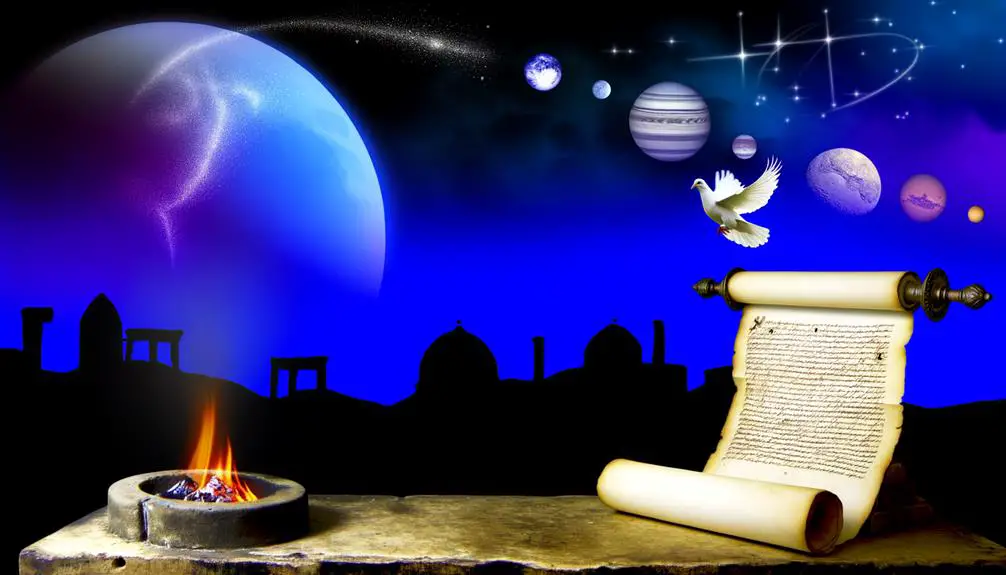
You'll find that omens played a pivotal role not only in biblical narratives but also in the broader context of ancient cultures.
Specifically, omens in Mesopotamia and their counterparts in Egyptian society offered insights into how these civilizations interpreted natural phenomena and events as divine messages.
This exploration reveals the complexity of their religious beliefs and the central role that omens held in influencing decisions and understanding the cosmos.
Omens in Mesopotamia
While exploring the rich tapestry of ancient cultures, it becomes evident that Mesopotamians placed significant emphasis on omens, viewing them as divine messages essential for understanding the gods' will. Mesopotamian astrology and divination techniques were complex and varied, reflecting a deep belief in the interconnectedness of the cosmos and human affairs.
- Astrological Observations: They meticulously tracked celestial movements, believing stars and planets influenced terrestrial events.
- Liver Divination: Priests examined animal entrails, especially livers, interpreting shapes and textures as signs from the divine.
- Dream Interpretation: Dreams were considered prophetic, offering insights into future events or divine displeasure.
- Natural Phenomena: Unusual occurrences in nature, like eclipses or floods, were seen as ominous warnings or messages from the gods.
These practices underscored a worldview where divine communication was integral to societal functioning and decision-making.
Egyptian Omens Explained
Shifting our focus to ancient Egypt, we uncover a society where omens were deeply woven into the fabric of daily life and religious practices. The Egyptians held a profound belief in the power of omens, which were often communicated through hieroglyphic symbols and the use of amulets.
These symbols and amulets served not just as mere decorations but were imbued with significant spiritual and protective properties. The interpretation of hieroglyphic symbols allowed the Egyptians to divine the will of the gods, guiding them in decision-making and protecting them from harm.
The amulet's significance, meanwhile, lay in its ability to ward off evil spirits and bring good fortune, embodying the ancient Egyptians' complex understanding of the supernatural world and their place within it.
Dream Omens in Genesis
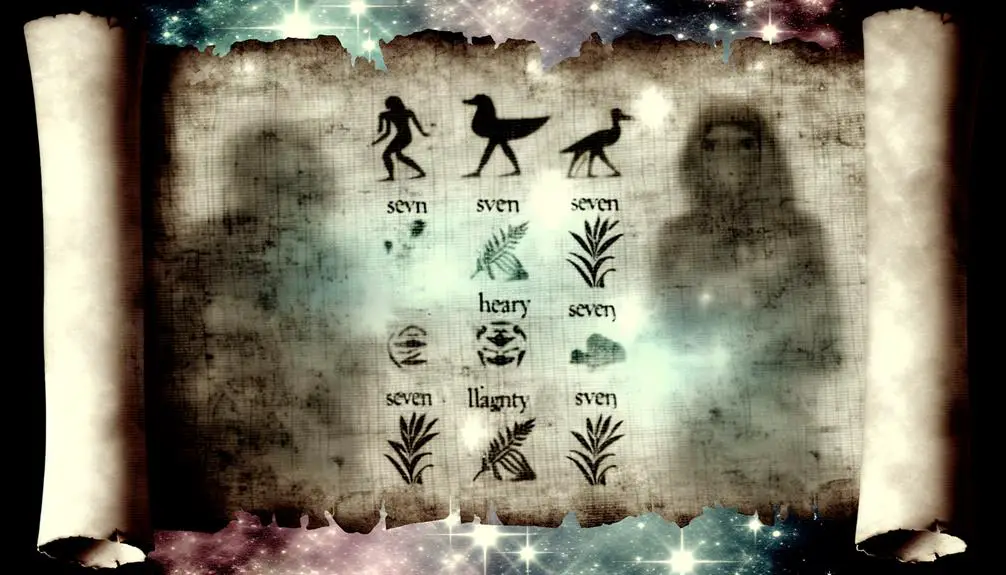
In the Book of Genesis, dream omens play a pivotal role in unfolding the narrative, particularly through Joseph's interpretative dreams and Pharaoh's prophetic visions.
You'll observe that these dreams not only forecast future events but also emphasize the divine communication present in ancient texts.
This analysis highlights how such omens are integral to understanding the characters' destinies and the broader theological themes within Genesis.
Joseph's Interpretative Dreams
Joseph's interpretative dreams serve as pivotal dream omens within Genesis, illustrating his unique ability to foresee and influence future events. These dreams, rich in dream psychology, unravel not just future occurrences but also delve into the emotional impact these revelations have on Joseph and those around him.
- Dreams as a divine communication tool: Dreams are portrayed as a medium for divine messages, guiding and warning individuals.
- Emotional complexity: The dreams often evoke strong emotional responses, influencing personal and communal dynamics.
- Prophetic accuracy: Joseph's interpretations reveal an uncanny accuracy, reinforcing the concept of predestined events.
- Influence on destiny: These dreams significantly alter Joseph's life path, demonstrating the power of divine foresight and human interpretation in shaping one's destiny.
Pharaoh's Prophetic Visions
Pharaoh's prophetic visions, like those of Joseph, serve as critical dream omens in Genesis, revealing an intricate blend of divine communication and its profound impact on the fate of Egypt. These narratives delve deep into Pharaoh's psychology, illustrating how dream interpretations directly influence his decision-making process.
The economic impacts of his dreams are monumental. Upon Joseph's interpretation, Pharaoh's actions to store grain in anticipation of famine not only avert disaster but also consolidate his power and economic stability in the region. This account demonstrates how divine omens, when correctly interpreted and acted upon, can have far-reaching consequences, affecting not just individual destinies but also the socioeconomic fabric of an entire nation.
Prophetic Visions and Signs
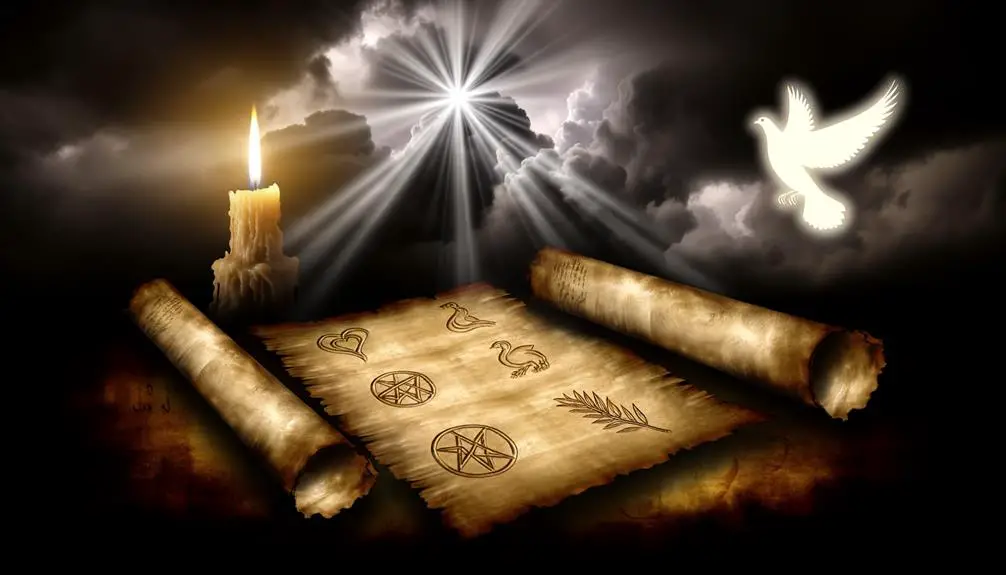
Throughout the Bible, prophetic visions and signs play a crucial role in communicating God's messages and intentions to humanity. These narratives aren't merely historical accounts; they serve as conduits through which divine will is transmitted, offering both warnings and promises. Understanding these elements within the biblical context requires an analytical approach, especially when considering their modern relevance and interpretative methodologies.
Here are four key points to consider:
- Interpretative Methodologies: Various frameworks exist for interpreting biblical prophecies and signs. These range from literal to allegorical approaches, each offering a unique lens through which to understand the messages contained within these visions.
- Modern Relevance: Despite the ancient origins of these texts, the themes and moral lessons found within prophetic visions remain pertinent today. They offer insights into ethical conduct, the importance of faith, and the nature of divine justice.
- Symbolism and Metaphor: Many prophetic visions utilize symbolic language and metaphor, necessitating careful analysis to discern their true meaning. This symbolic language often speaks to universal truths, transcending the specific historical context of the texts.
- Historical and Cultural Context: Understanding the historical and cultural backdrop against which these visions were received is essential for a comprehensive interpretation. This context sheds light on the specific challenges and questions facing the original audience, providing a richer understanding of the text's message.
In delving into the prophetic visions and signs of the Bible, you're engaging with a tradition that spans millennia, offering profound insights into the human condition and the divine.
The Star of Bethlehem
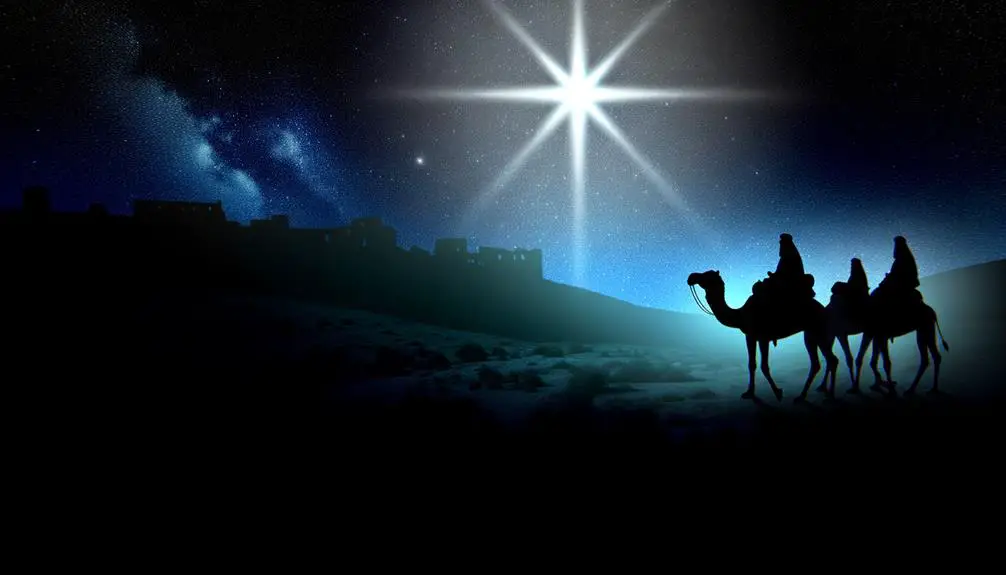
Building on the exploration of prophetic visions and signs, the Star of Bethlehem emerges as a pivotal symbol in biblical narratives, inviting a closer examination of its significance and implications. This celestial phenomenon, heralding the birth of Jesus Christ, has intrigued scholars and theologians alike, prompting a blend of religious reverence and scientific curiosity. You're now delving into a realm where faith intersects with empirical inquiry, particularly through the lens of astronomical theories and the quest for historical accuracy.
Astronomical theories propose various celestial events as potential explanations for the Star of Bethlehem, including comets, supernovae, and planetary conjunctions. These hypotheses aim to anchor the biblical account in observable, historical celestial phenomena, thereby enhancing its historical accuracy. You're encountering a meticulous effort to reconcile biblical text with astronomical records, an endeavor that not only illuminates the past but also enriches the ongoing dialogue between science and religion.
The quest for historical accuracy in interpreting the Star of Bethlehem extends beyond mere academic curiosity. It reflects a deeper desire to understand the nature of divine intervention in human history, as narrated through biblical texts. This pursuit challenges you to consider the implications of such an event—was it a miraculous sign, divinely ordained, or can it be explained within the framework of natural cosmic occurrences?
In navigating these considerations, you're engaging with a complex interplay of faith, science, and history. The Star of Bethlehem, as a symbol, transcends its biblical origins, inviting a nuanced reflection on the nature of omens and the ways in which they're woven into the fabric of human belief systems.
Natural Phenomena as Omens
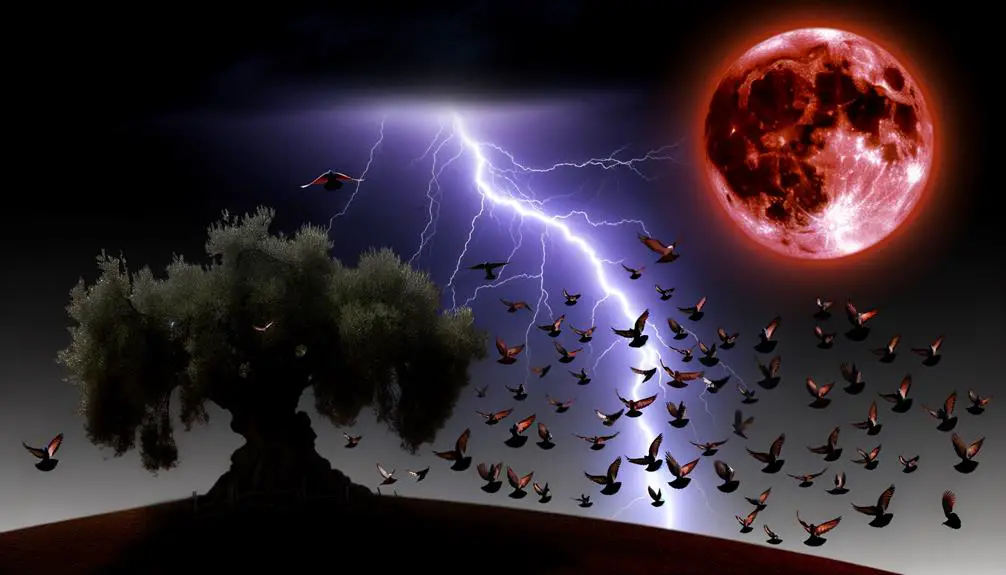
In exploring the interplay between divine portents and natural phenomena, it's vital to recognize how ancient cultures interpreted celestial events as omens, offering insights into their understanding of the cosmos and divine will. These interpretations, deeply rooted in the fabric of their societies, blend seamlessly with modern superstitions and scientific explanations, showcasing the evolving nature of human belief systems.
- Eclipses: Historically, solar and lunar eclipses were seen as dire warnings from the divine, often associated with forthcoming calamities or significant changes. Modern superstitions still echo these ancient fears, though scientific explanations have demystified these celestial phenomena, attributing them to the natural orbits of Earth and moon.
- Comets and Meteors: In biblical times, the sudden appearance of comets or meteors streaking across the sky was often heralded as a sign of impending doom or divine intervention. Today, while science provides a clear understanding of these cosmic events, some remnants of their ominous interpretations linger in modern culture.
- Unusual Weather Patterns: Extreme weather events, such as unseasonal storms or droughts, were once considered indicators of divine displeasure or omens of significant societal shifts. Scientific advancements now allow for a better understanding of climate patterns, yet the inclination to see these occurrences as portentous persists.
- Earthquakes: Tremors and earthquakes were, and in some cultures still are, perceived as messages from the divine, signaling anger or the need for human reflection and change. Scientific explanations have largely demystified earthquakes, attributing them to natural tectonic movements, yet their impact on human psyche as potential omens remains.
These examples illustrate the complex relationship between natural phenomena and their interpretation as omens, bridging ancient beliefs with modern superstitions and scientific rationality.
Interpretation and Misinterpretation

Exploring how societies have historically interpreted or misinterpreted natural phenomena as divine omens sheds light on the complex interplay between belief, knowledge, and culture. This analysis demonstrates the pivotal role of interpretation in understanding events deemed supernatural or divine. Throughout history, interpretations of omens have significantly influenced decisions, changed courses of action, and shaped societal norms and beliefs. However, the process of interpretation is fraught with the potential for misinterpretation, influenced by cultural, religious, and personal biases.
Modern skepticism challenges traditional interpretations of omens, advocating for a rational, evidence-based approach to understanding natural phenomena. This skepticism is rooted in a broader movement towards questioning established narratives and seeking explanations grounded in science rather than superstition. It reflects a shift in how knowledge is validated and underscores the importance of critical thinking in discerning truth from belief.
Cultural relativism further complicates the interpretation of omens, suggesting that what's considered an omen in one culture may not hold the same significance in another. This perspective encourages an appreciation for the diversity of belief systems and practices, advocating for an understanding that interpretations are deeply embedded in cultural contexts. It posits that interpretations of omens, like all cultural practices, must be viewed through the lens of the cultural and historical circumstances that give them meaning.
Omens and Divine Will

The concept of omens as manifestations of divine will has deeply influenced human understanding and interpretation of unexplained phenomena, shaping societal reactions and beliefs across different cultures. When you examine the role of omens within the framework of divine intervention, it becomes evident that these signs were often seen as direct communications from the divine realm, intended to guide, warn, or affirm the actions of individuals and communities.
Omens carry a symbolic representation that transcends mere coincidence, suggesting a universe imbued with meaning and purpose. This perception encourages a closer examination of events, natural occurrences, and even dreams, as potential messages endowed with divine significance.
To understand the depth of omens and divine will, consider the following points:
- Divine communication: Omens are often interpreted as a form of divine speech, where the supernatural realm uses symbols and events to communicate with humanity.
- Guidance and warning: They serve as guidance for future actions or as warnings against potential missteps, reflecting a benevolent desire to steer humans towards their destined path.
- Symbolic complexity: The interpretation of omens requires a deep understanding of symbolic language, as the same omen can hold different meanings depending on the context and the individual receiving it.
- Cultural interpretation: The significance and interpretation of omens vary widely across cultures, influenced by historical, religious, and societal factors, demonstrating the diversity of human engagement with the divine.
Frequently Asked Questions
How Do Modern Theologians Reconcile the Concept of Omens in the Bible With the Principle of Free Will?
You might wonder how theologians tackle reconciling predictive elements with free will.
They delve into the complex interplay between Divine Sovereignty and Human Responsibility. Essentially, they argue that while higher powers might direct events or send signs, individuals still possess the autonomy to make choices.
This nuanced perspective maintains that divine guidance doesn't override human freedom, but rather, both coexist, allowing for a deeper understanding of spiritual and moral autonomy.
Are There Any Documented Instances in Contemporary Times That Religious Leaders Have Identified as Omens Similar to Those Described in the Bible?
You're wondering if contemporary religious leaders have pinpointed events as omens akin to biblical times.
Indeed, some have interpreted phenomena like climate change as warning signs, urging societal reflection and action.
Similarly, fluctuations in cryptocurrency trends have been viewed by a few as indicators of economic and moral shifts, mirroring ancient omens in significance.
These interpretations serve as modern attempts to understand and respond to unfolding global challenges through a spiritual lens.
How Did the Early Church Fathers View the Legitimacy of Seeking and Interpreting Omens in the Context of Christian Doctrine?
Early church fathers viewed the search for and understanding of omens within Christian doctrine through the lens of divine providence. They carefully applied interpretational methods to discern God's will. Some were cautious, considering it a grey area that required wisdom. Others outright rejected such practices as incompatible with Christian teachings, emphasizing direct divine guidance over the ambiguous signs often associated with omens.
These differing viewpoints reflect the complexity of early Christian attitudes towards omens and the importance placed on discerning God's will in a way that aligns with established Christian beliefs and teachings.
In What Ways Have Omens in the Bible Influenced or Been Reflected in Other Religious Texts Outside of Christianity and Judaism?
Imagine exploring ancient texts and discovering a story mirroring Joseph's dream interpretations from the Bible. You'd find cultural parallels in Islamic texts, where Joseph's prophetic dreams also play a crucial role.
This reflects how omens have transcended religious boundaries, influencing interfaith interpretations and showcasing an interconnection between Christianity, Judaism, and Islam.
Such examples highlight the shared heritage and mutual influences among these faiths, providing a rich field for scholarly analysis.
Can the Belief in Omens as Depicted in the Bible Be Aligned With the Scientific Understanding of Causality and Coincidence?
Aligning the belief in omens with scientific understanding of causality and coincidence involves applying scientific methodology and probability theory.
You'd find that scientific approaches rely heavily on empirical evidence and repeatability, contrasting the more subjective interpretation of omens.
While probability theory might explain certain coincidences as statistically likely events, it doesn't necessarily validate the predictive power or deeper meaning attributed to omens, emphasizing a fundamental disconnect between these perspectives.
Conclusion
You've now ventured through the labyrinth of omens in the Bible, witnessing the universe whisper secrets in dreams, stars, and storms.
These narratives aren't just ancient tales; they're the cosmic fabric weaving human destiny with divine will.
Interpretation, however, walks a tightrope over an abyss of misinterpretation, challenging even the wisest.
Remember, discerning the divine from the mundane is akin to finding a needle in a celestial haystack.
Yet, this exploration reveals the nuanced relationship between mankind and the divine, a dance of fate and free will.

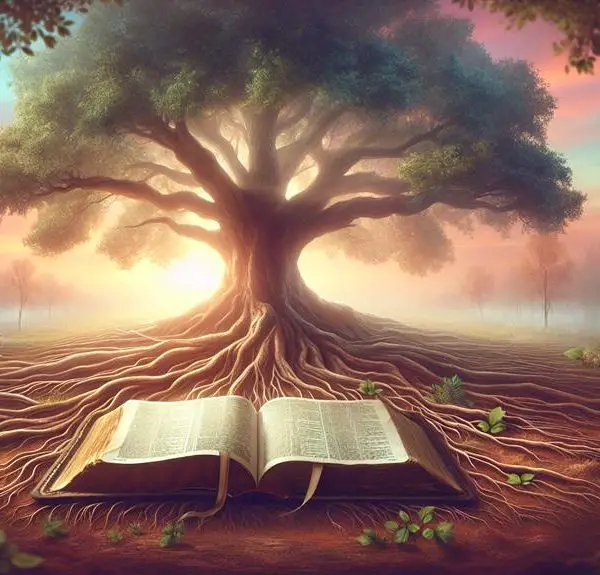

Sign up